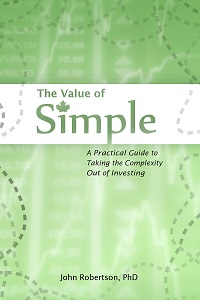Prius Update
April 30th, 2010 by PotatoEven though everything is still in the break-in phase and I haven’t gotten around to changing my driving techniques, I’ve been getting pretty decent mileage in the Prius. Around town I’ve averaged 6 L/100 km for the most part, which doesn’t sound very impressive at first blush since the car is rated for 4, but you have to bear in mind that these have been short trips, just to the grocery store or the curling club. I know that in the Accord I was getting 10-12 L/100 km on the same sort of trips. As the weather has been warming up this has been getting better: the car won’t shut the gas engine off until after it’s fully warmed up (for emissions control reasons). In February, I’d get about halfway to the grocery store before I got to that point, now it happens in about 3 blocks. The consumption in town after that first few minutes of warming up has been fantastic: I drove out to Baskin Robbins yesterday for their cheap ice cream day (plus a Canadian Tire trip), and averaged 3.7 L/100 km for the trip (and my first block on the mileage display was again around 6, so the other three blocks were really efficient to make up for it!). The car simply loves London driving: cruising around 65 km/h and only stopping every 2 km or so for a light (and again to compare, I’d estimate that the Accord would get about 8 L/100 km in this kind of driving).
On the highway, I got 3.8 L/100 km driving up to the cottage one weekend, but otherwise have been around 4.5 L/100 km (driving about 110 km/h on the 401) which is quite respectable, and compares to about 7-7.5 L/100 km in the Accord.
Overall, my average has been 5.2 L/100 km in nearly 2000 km of driving. That’s as measured by the amount of gas I’ve put in and the number of km on the odometer. Oddly enough, the car’s computer/display is slightly more optimistic (and this phenomenon is well known on PriusChat).
Unfortunately, the paint is thin. I told you about the first scratch already. Since then there’s been a small rock chip taken out of the front quarterpanel, and then a tree dripped sap on the hood. Sadly, I made that situation worse with my own stupidity by trying to clean it with paper towel, which is apparently too abrasive for the hood, so now there are swirly/spiderweb marks in the clearcoat — and it never touched the sap! Finally some Goo Gone took the sap right off, but the sap looks to have taken some of the clear coat with it (the finish looks kind of dull on that line).
I’m going to try putting on a coat of Nu Finish on the weekend to see if that improves matters at all.
Prius cool fact for this post: the throttle behaviour on the Prius can be changed in different ways. Many cars on the road have a gas pedal that gives you ~80% of your available power within the first 25-50% of your pedal range. That is, you just lightly touch the pedal and you take off to a screaming start. This is often done to give cars a sporty feel, and in part to get around the reluctance many drivers have to put the pedal to the floor when they do actually want full acceleration, but can sometimes lead to jerky acceleration if you don’t have a deft foot (which, sadly, my mother doesn’t). The Prius’ default is to have a linear pedal: 50% depression gives you 50% of your available power. Combined with the fact that there are no gears, this can make it feel sluggish on a test drive since it doesn’t take off with light pedal pressure like you’d expect it do. However, if you put the pedal down like you mean it, the car will go. If you want, you can put the car in “power mode”, which changes the pedal behaviour to give more power in the first part of the depression, to act more like a normal car. Alternately, in “eco mode” things are reversed so that the non-linearity gives you less than 50% of your power in the first half of pedal travel. That gives you more fine control over the lower end of your throttle so you can drive more efficiently with a deft touch.
These driving modes do affect other systems (for example, eco mode will let the air conditioning run lower when the engine is off to try to save energy).


 Questrade: use QPass 356624159378948
Questrade: use QPass 356624159378948 Passiv is a tool that can connect to your Questrade account and make it easier to track and rebalance your portfolio, including the ability to make one-click trades.
Passiv is a tool that can connect to your Questrade account and make it easier to track and rebalance your portfolio, including the ability to make one-click trades.